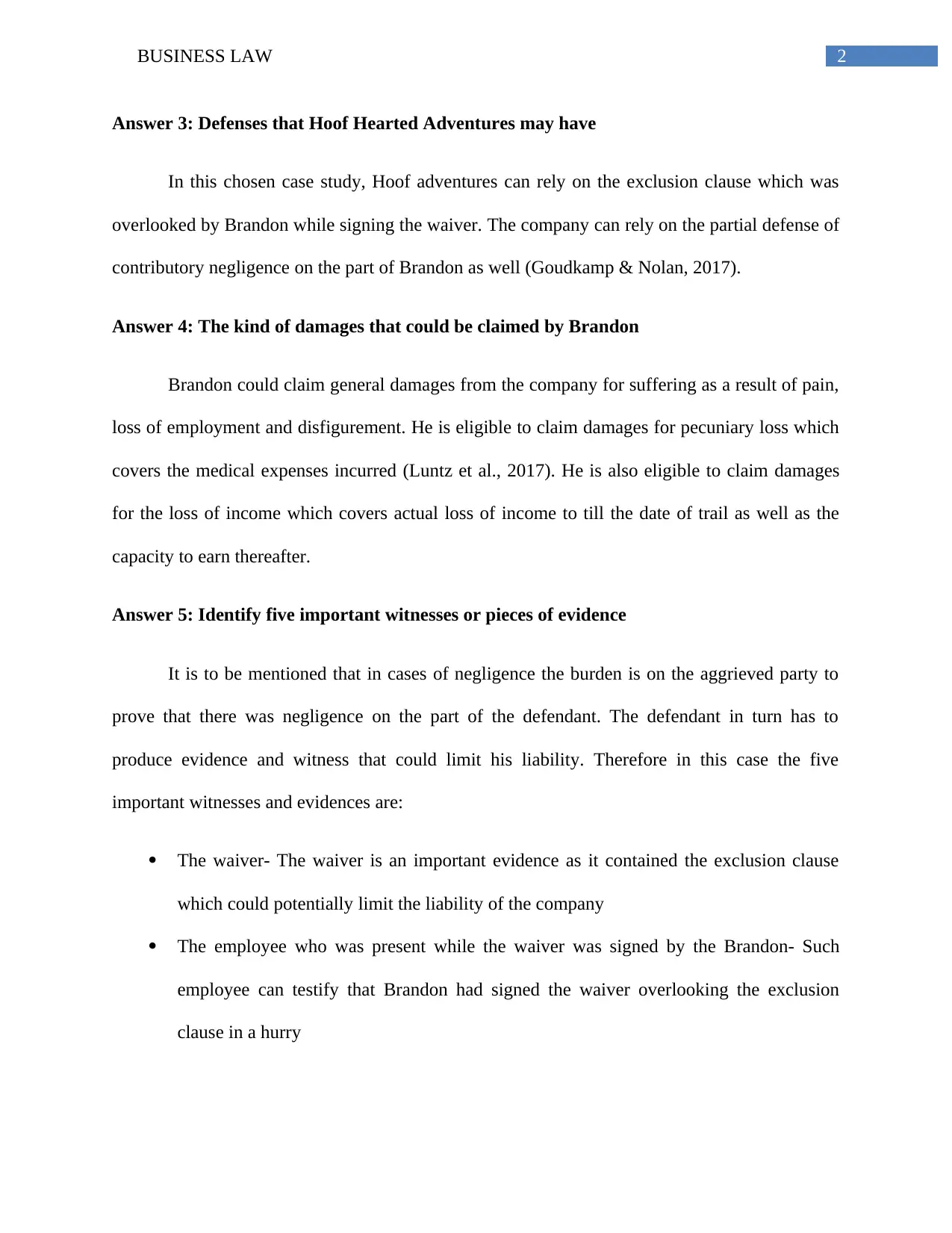MGMT1601 Business Law: Analyzing Negligence & Duty of Care
VerifiedAdded on 2023/06/15
|5
|804
|63
Case Study
AI Summary
This case study delves into a negligence claim against Hoof Hearted Adventures Ltd, focusing on whether the company breached its duty of care to Brandon, who sustained injuries during a horse riding accident. The analysis identifies legal principles such as negligence, exclusion clauses, and contributory negligence. It assesses the elements of negligence—duty of care, standard of care, damage, and causation—establishing a prima facie case against the company. The study also considers potential defenses, including the exclusion clause in the waiver signed by Brandon and contributory negligence. Furthermore, it outlines the types of damages Brandon could claim, such as general damages for pain and suffering and pecuniary loss for medical expenses and lost income. Finally, it identifies crucial witnesses and pieces of evidence, including the waiver, employee testimonies, hospital records, and Brandon's pay slips, essential for proving or disproving negligence and determining liability. Desklib offers a range of resources, including similar case studies and past papers, to aid students in their studies.
1 out of 5











![[object Object]](/_next/static/media/star-bottom.7253800d.svg)